On Air Now
The Chris Moyles Show 6:30am - 10am
8 January 2019, 17:41

David Bowie may have left a stack of secrets in his Blackstar artwork, but which other artists have left surprises in their sleeves?
David Bowie intrigued his fans with a series of “secrets” left within the artwork of his final album Blackstar. But, the hidden message in LP art has a long and dignified history in rock… It’s well known that David Bowie was a huge Velvet Underground fan and the shenanigans surrounding the artwork to his final album Blackstar is paying a subtle homage to this classic VU album.

The original artwork to the 1968 album White Light/White Heat appears to be pure black… but if you look closely you can see a very faint image of a skull tattoo. It belonged to the actor Joe Spencer, who was one of Andy Warhol’s “discoveries” - and it’s thought the black-on-black design was a Warhol idea. (Photo: www.turntablelab.com)

On the famous cover of Sgt Pepper’s Lonely Hearts Club Band, photographer Michael Cooper gave a namecheck to the band’s biggest “pop rivals”, with a doll wearing a sweatshirt that said “Welcome The Rolling Stones”. Later in 1967, Cooper shot the cover for the Stones’ psychedelic album Their Satanic Majesties Request.
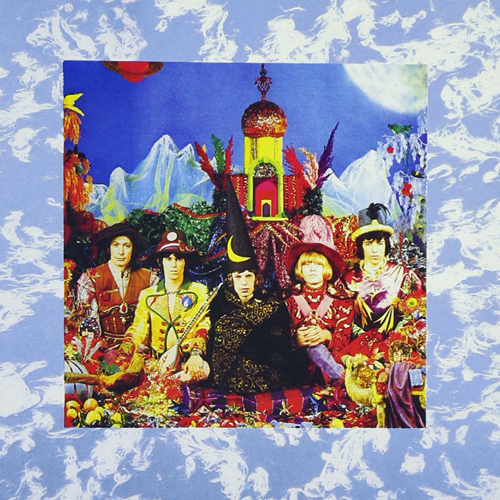
And he included a reciprocal shout out to the Fabs, courtesy of their faces hidden in the folds of material and flowers:

The cover to the trio’s 1986 debut Licensed To Ill features a stupid visual joke of a plane crunching into the side of a mountain. But look closer for a puerile message.

Hidden (in plain sight) is the plane’s serial number: 3MTA3. What happens if you reverse it? You get EATME. Nice.
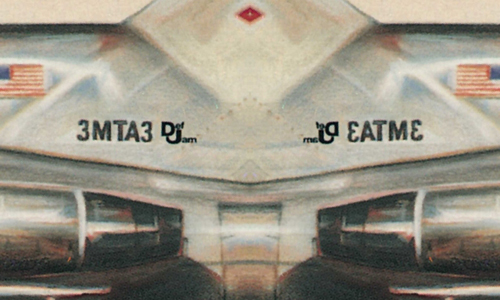
Not long after the stupidly daft “Paul Is Dead” rumour that gripped hippies in the US in 1969, Macca left a real hidden message the cover of his 1971 album, Ram…

L.I.L.Y. stands for “Linda I Love You”. Aw.
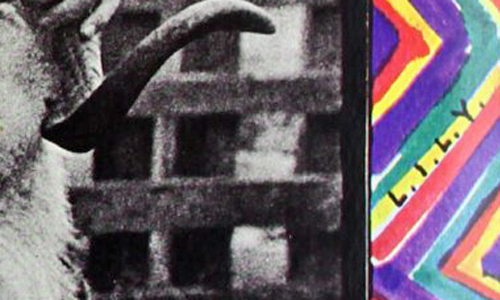
Never mind the backwards messages, here’s the clincher. If you open up the gatefold to Led Zep IV, you get this classic image of a hermit on a hill (buying a Stairway To Heaven, presumably). But if you place the image by a mirror...

YES, YOU CAN SEE THE HORNED BEAST IN THE ROCKS. Can’t you? It’s obvious!
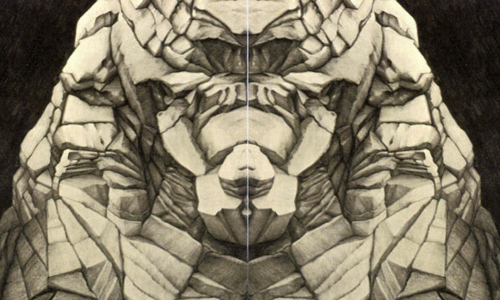
Klaus Voormann, a friend of The Beatles from their days in Hamburg at the beginning of the 1960s drew the striking cover for the Fabs’ 1966 album Revolver.
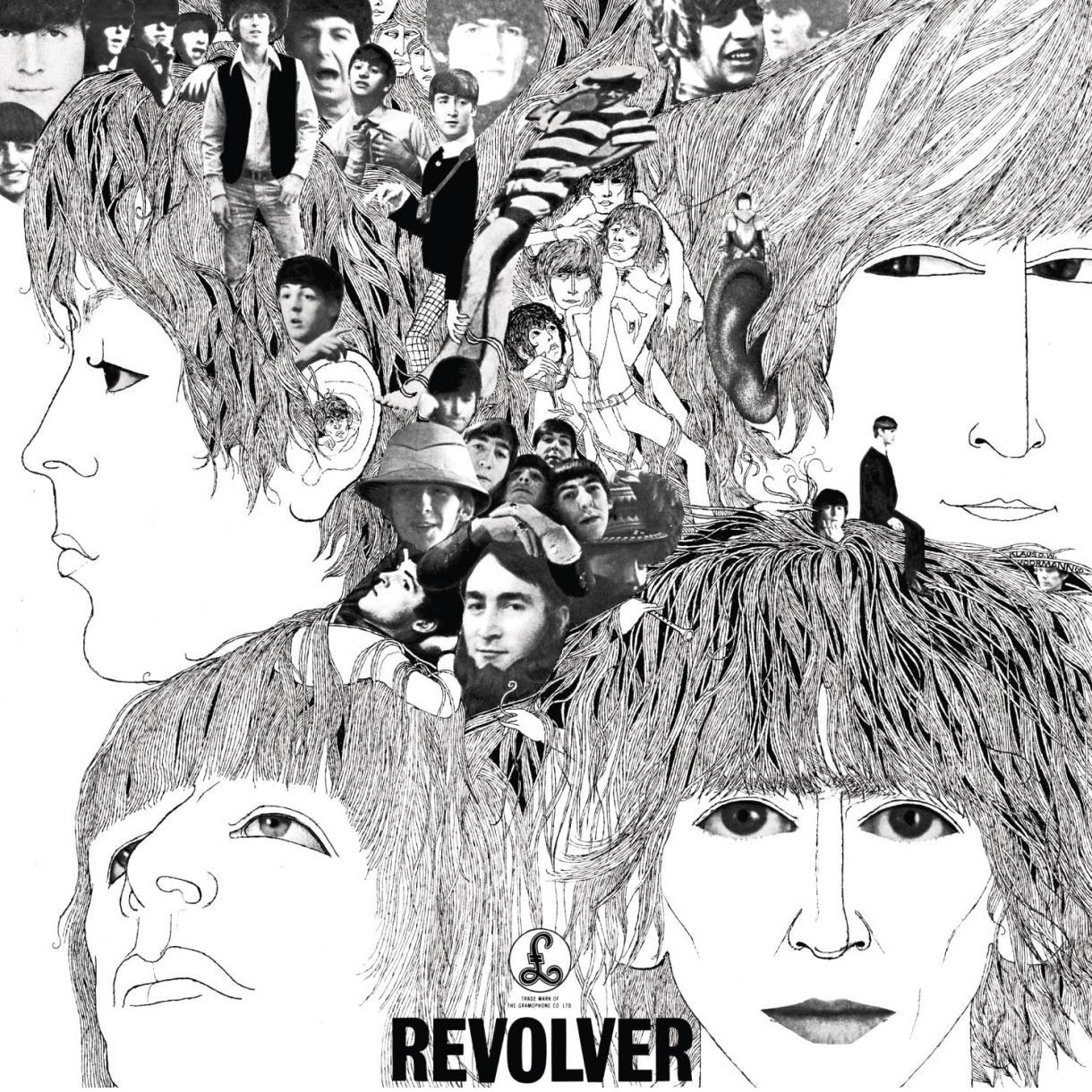
He created the collage out of a number of photos of the band (some of which appear on the back cover of the previous album, Rubber Soul) and Klaus himself appears on the front cover, just underneath the drawing of John’s mouth.

Atlanta garage rockers Black Lips had migraine-inducing artwork for their 2009 album 200 Million Thousand, but if you look closer, you can apparently see a face hidden in the black bars. It works best if you look at it out of the corner of your eye. We need a bit of a lie down in a dark room after staring at it for twenty minutes…

Derek Riggs concocted the memorable artwork for Britain’s greatest Heavy Metal export, including their hideous mascot Eddie. For 1988’s Somewhere In Time, the cover art incorporated a huge number of references to science fiction stories and movies, plus previous Maiden sleeves. They’re all logged here if you’re interested...

But our favourite comes in the bottom left hand corner, in which a banner is hung in a shop behind the future-Terminator Eddie. If you reverse it, you see the message “THIS IS A VERY BORING PAINTING”. Time for another cuppa, Derek?

The Chester band made a splash with their debut album Attack Of The Grey Lantern, but their second album Six was a conceptual affair that baffled the Britpop generation. The cover features many cryptic clues to the record’s concept (including Patrick McGoohan as Number 6 from the TV series The Prisoner, and Winnie The Pooh, whose creator A. A. Milne also wrote Now We Are Six), but there are a couple of others…

The track Witness To Murder Part II featured a narration from former Doctor Who Tom Baker, who is depicted on the cover too. And there’s also a little TARDIS!

Led Zep’s final album to be released before drummer John Bonham’s death was an elaborate affair: there were six different sleeves designed by Storm Thorgerson of celebrated art house Hipgnosis, each featuring a different angle of the same bar-room scene. The album was wrapped in brown paper, so you didn’t know which one you’d picked. However…

If you applied water to the black and white inner sleeve, colours magically appeared! It was an old trick stolen from little kids’ painting books.

